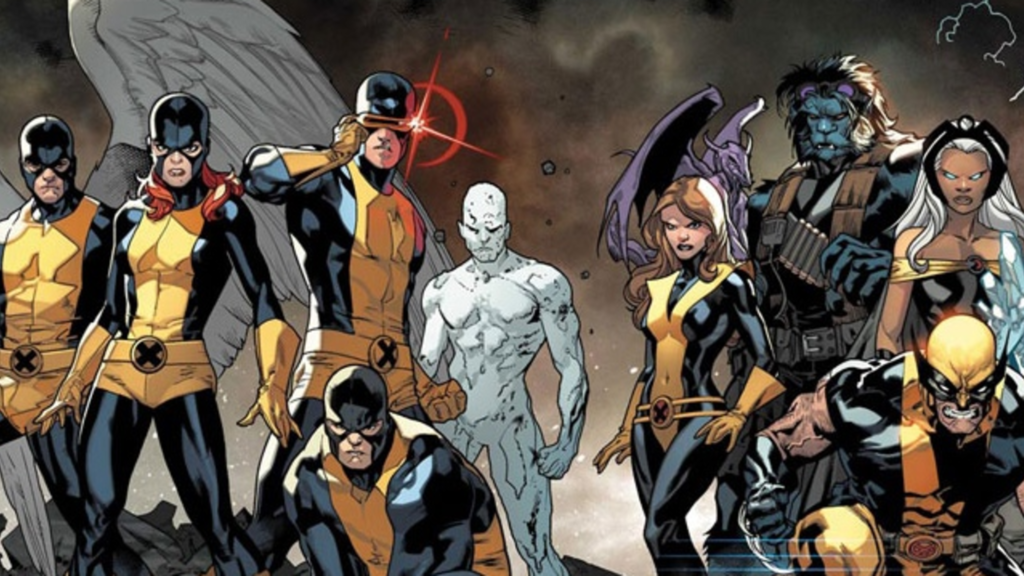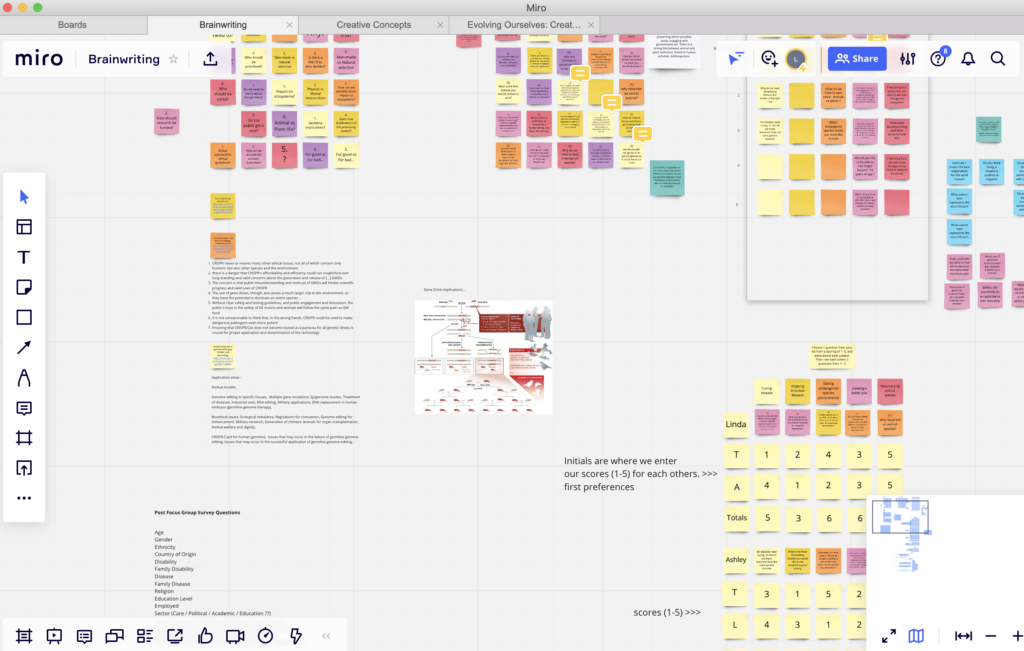Road trip to Hat Creek
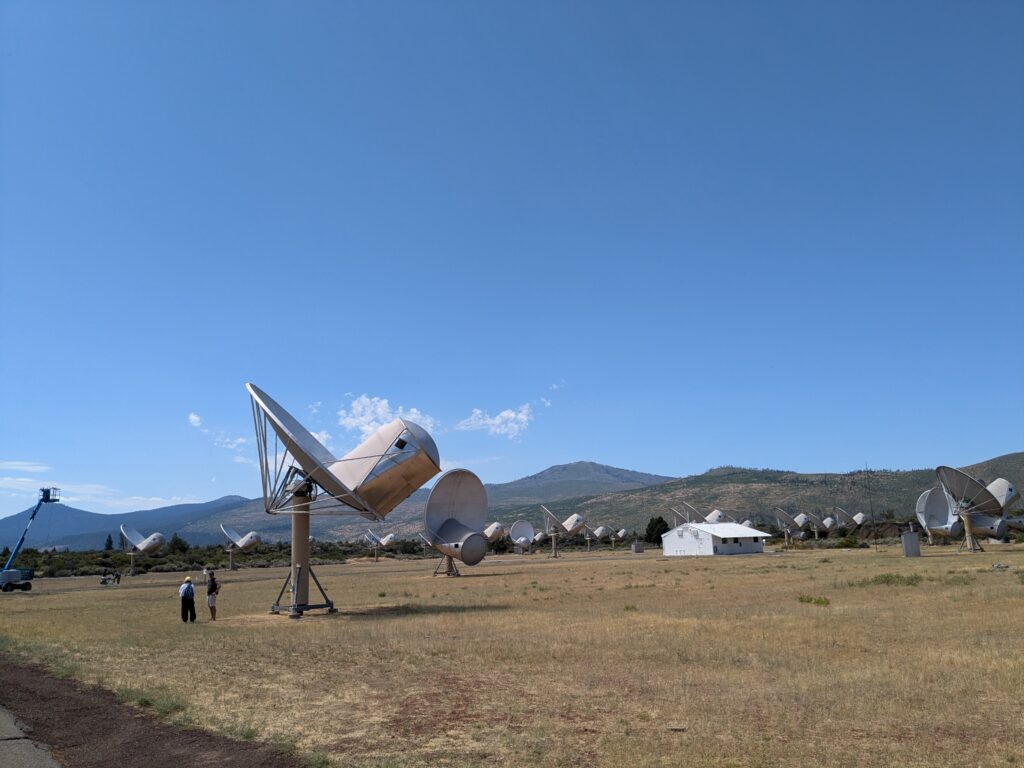

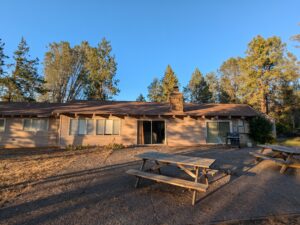
As our first trip to the SETI Institute drew to a close, we had the incredible opportunity to visit the Hat Creek Observatory, home to the Allen Telescope Array—the only instrument specifically designed for conducting SETI research. Nestled 300 miles northeast of San Francisco in Shasta County, California, the observatory offered us a rare glimpse into the heart of the search for extraterrestrial intelligence.
The journey to Hat Creek was long, over five and a half hours on the road, but the sight of the beautiful telescopes made it all worthwhile. Upon arrival, we were greeted by Dr. Alexander Pollak, the Science and Engineering Operation Manager, who provided us with an intensive tour of the site. While much of the information was technical, it was fascinating to learn about how data is collected from the solar system, how it is stored, and how it is analyzed. Our discussions also ventured into the realm of AI, contemplating its potential to interpret the vast amounts of data collected. However, we discovered that we are still far from relying on AI alone, as the complexity of identifying a signal from another species remains a task that only human perception, through graphs or sound analysis, can currently manage.
During our visit, we observed a group of undergraduate students diligently working in the sweltering heat, field-testing a small model of a rover that might one day explore the surface of the moon. It was inspiring to see the next generation of scientists engaging directly with the technology and challenges of space exploration.
Listening to the Cosmos
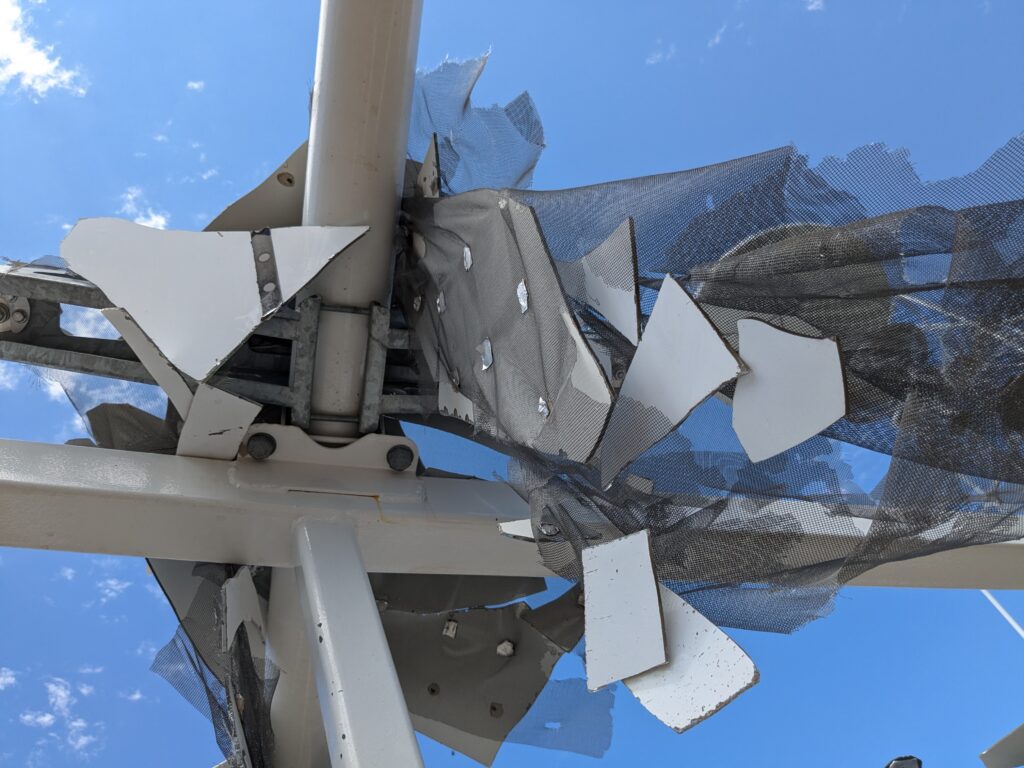
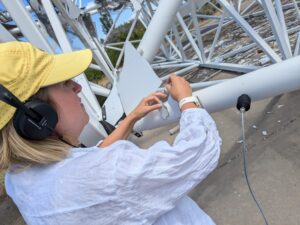
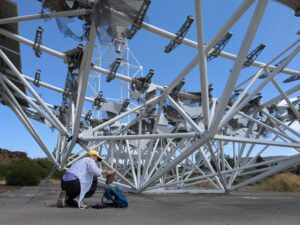
Throughout our time at Hat Creek, Linda recorded the sounds surrounding us—the telescopes humming with the effort of capturing signals from the cosmos, the old abandoned military telescope, the persistent buzz of crickets and cicadas during the day and night, and the conversations between Non Random and the SETI staff. These layers of sound served as a constant reminder of the rich tapestry of information—both human and non-human—that envelops us.
Allan Array
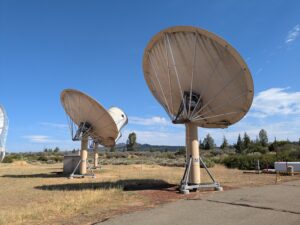
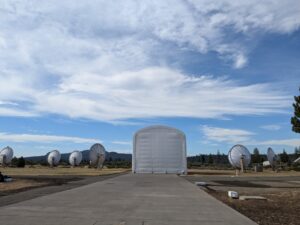
The array has 34 fully operational telescopes collecting data across the night sky for various researchers, the hum from these beautiful machines is constant, but a vivid reminder that we are still looking for life beyond our solar system.
Reflection, Recreation, and Inspiration at Hat Creek
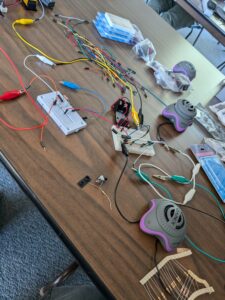
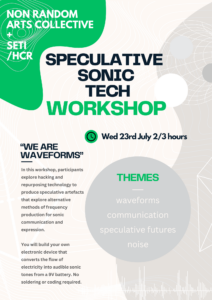
The three days at Hat Creek also provided us with a much-needed opportunity to reflect on the intense discussions and work of the previous weeks. It was a time to decompress, to think deeply about everything we had explored, and to prepare for the next steps in our residency. Bettina, the SETI AiR director who had been instrumental in bringing us to SETI and one of our most enthusiastic workshop participants, joined us at Hat Creek. We found ourselves surrounded by books on science and communication, from historic texts mapping the solar system to contemporary works on quantum mechanics, string theory, and astrophysics. Yet, we were also surrounded by classic and modern films—from Alien to Contact, The X-Files to Star Trek—highlighting how much fiction and fantasy influence science and shape our engagement with it, often as much as the textbooks and theories themselves.
While there, we engaged in conversations about the persistent barriers between the sciences and the arts in communicating with each other, and the misconception that interdisciplinary research is a new concept when, in reality, it has been happening for centuries. We discussed how to create spaces for collaborative dialogue, where our respective fields can reveal their commonalities and the mutual benefits of working together.
Amidst these deep discussions, we also found time to relax, play pool and card games, and enjoy great food—including an amazing barbecue prepared by Ashley and Bettina, which was gratefully devoured by the rest of the team: Linda, Tony, and Ines. We even began sketching out some preliminary ideas and projects, letting the inspiration of the observatory and the surrounding environment fuel our creativity.
Science and the Arts in beautiful harmony
Our visit to Hat Creek was more than just a field trip; it was a culmination of our residency, a moment to synthesize our experiences, and a springboard for future explorations. As we leave this remarkable place, we carry with us a renewed sense of purpose and a deeper understanding of the interplay between art and science—an understanding that will undoubtedly shape our work in the years to come.
